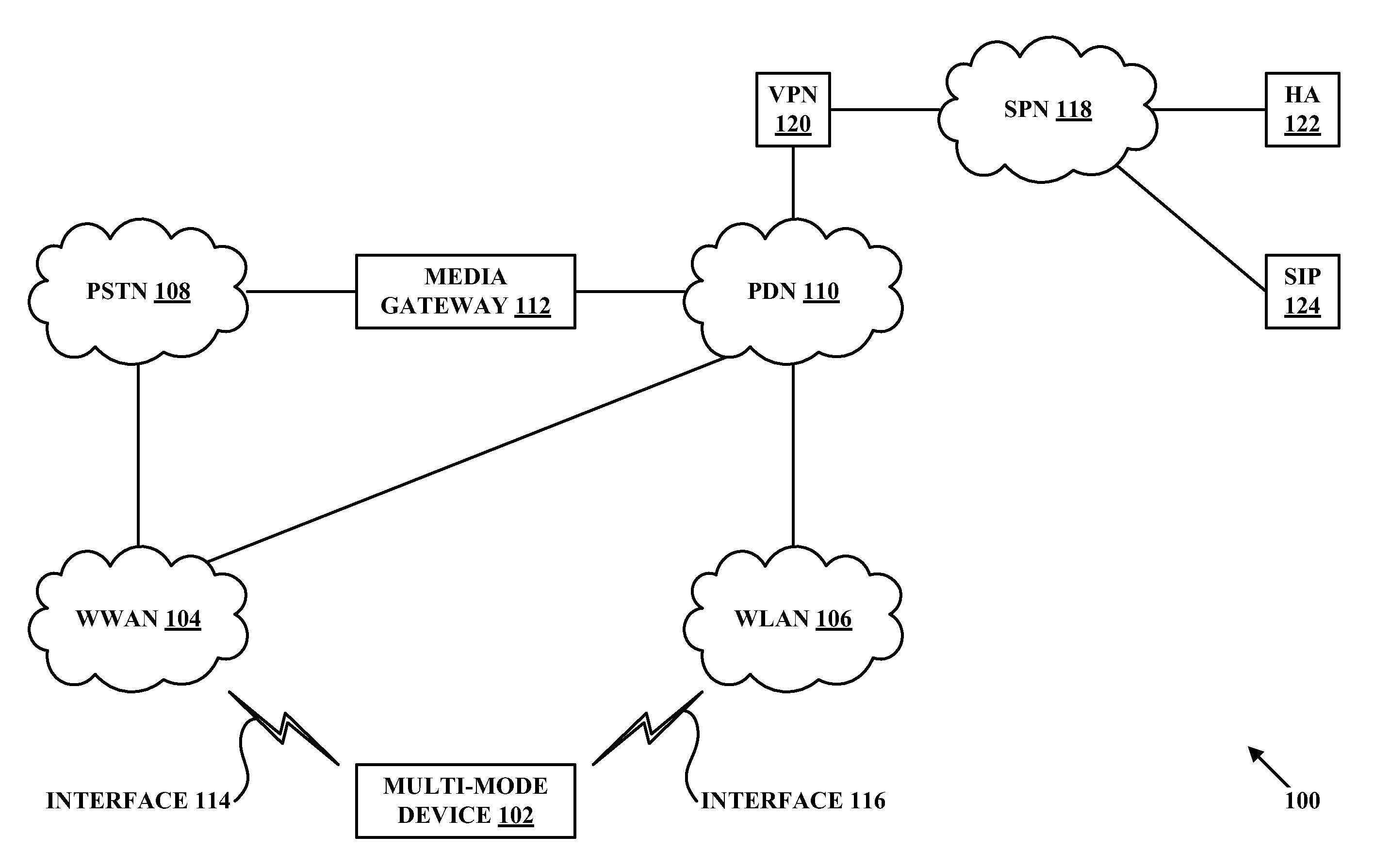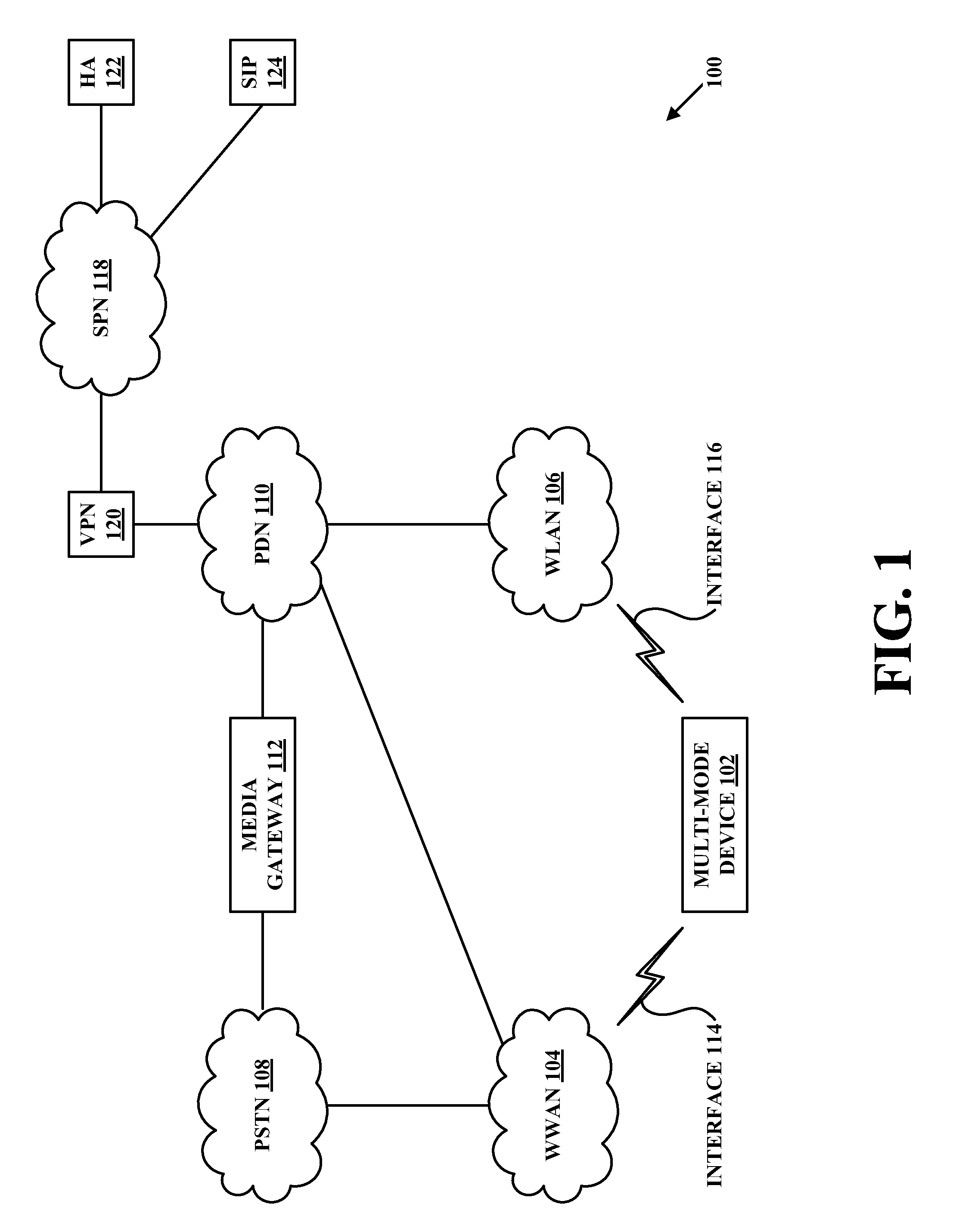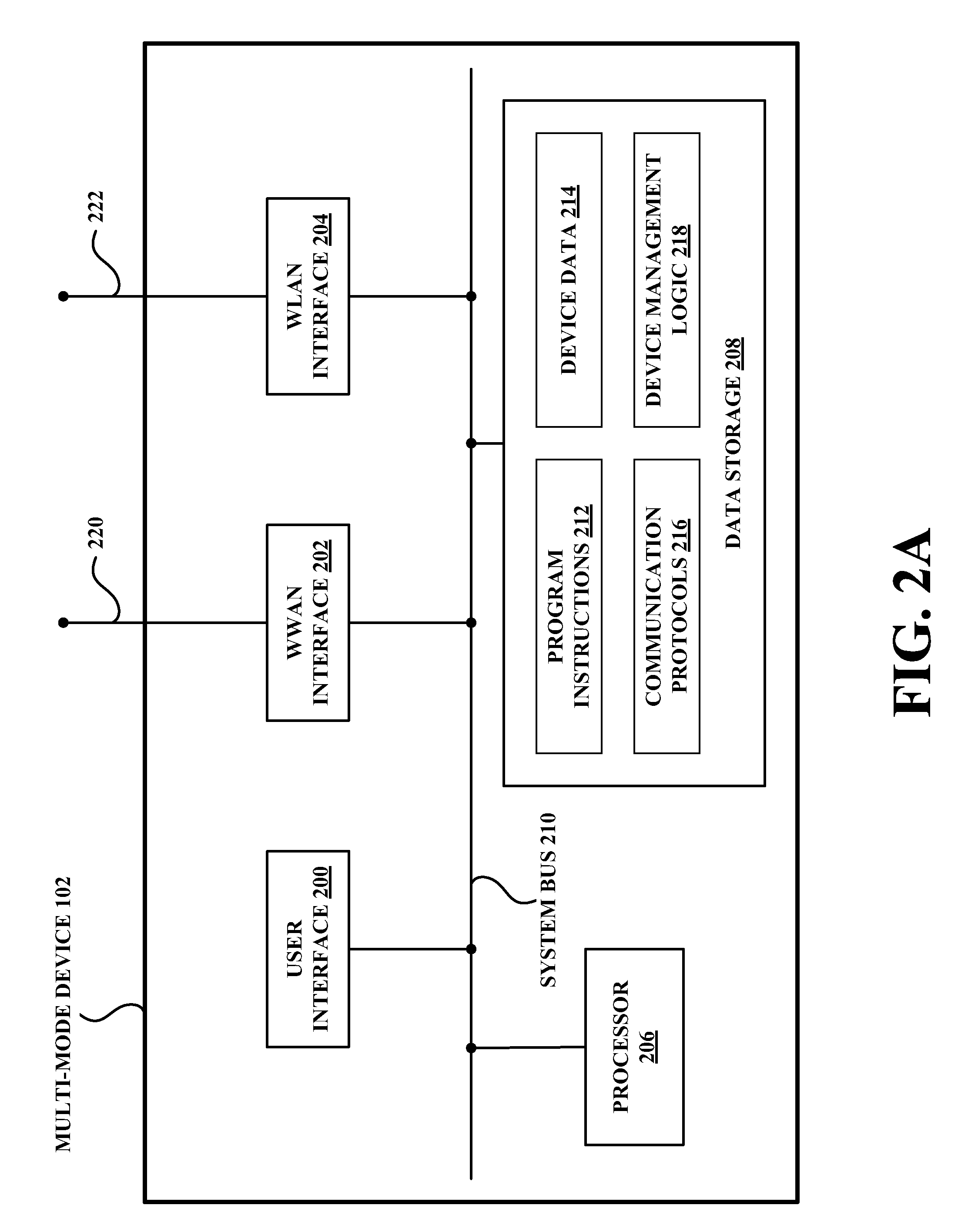Selective scanning for WLAN coverage by a multi-mode device
- Summary
- Abstract
- Description
- Claims
- Application Information
AI Technical Summary
Benefits of technology
Problems solved by technology
Method used
Image
Examples
Embodiment Construction
1. Overview
[0022]In general, as noted above, WWANs generally have a much larger coverage area (i.e. footprint) than do WLANs. Accordingly, it is typically the case that multi-mode devices have their WWAN-communication capability enabled at substantially all times (i.e. they are usually in either a “WWAN only” mode or a “combined WWAN / WLAN” mode). When operating in the combined WWAN / WLAN mode (and not connected to a WLAN), multi-mode devices are typically programmed to occasionally scan for WLAN coverage (e.g. attempt to detect a WLAN beacon corresponding to a WLAN access point). This may involve scanning for any available WLANs, scanning for WLANs associated with sets of data already stored in the multi-mode device, or perhaps a combination thereof. Upon finding a suitable WLAN to which to connect, multi-mode devices may conduct what is known as a vertical handoff from the WWAN to the WLAN. This handoff is referred to as being vertical because it involves handing off between dispara...
PUM
 Login to View More
Login to View More Abstract
Description
Claims
Application Information
 Login to View More
Login to View More - R&D
- Intellectual Property
- Life Sciences
- Materials
- Tech Scout
- Unparalleled Data Quality
- Higher Quality Content
- 60% Fewer Hallucinations
Browse by: Latest US Patents, China's latest patents, Technical Efficacy Thesaurus, Application Domain, Technology Topic, Popular Technical Reports.
© 2025 PatSnap. All rights reserved.Legal|Privacy policy|Modern Slavery Act Transparency Statement|Sitemap|About US| Contact US: help@patsnap.com



